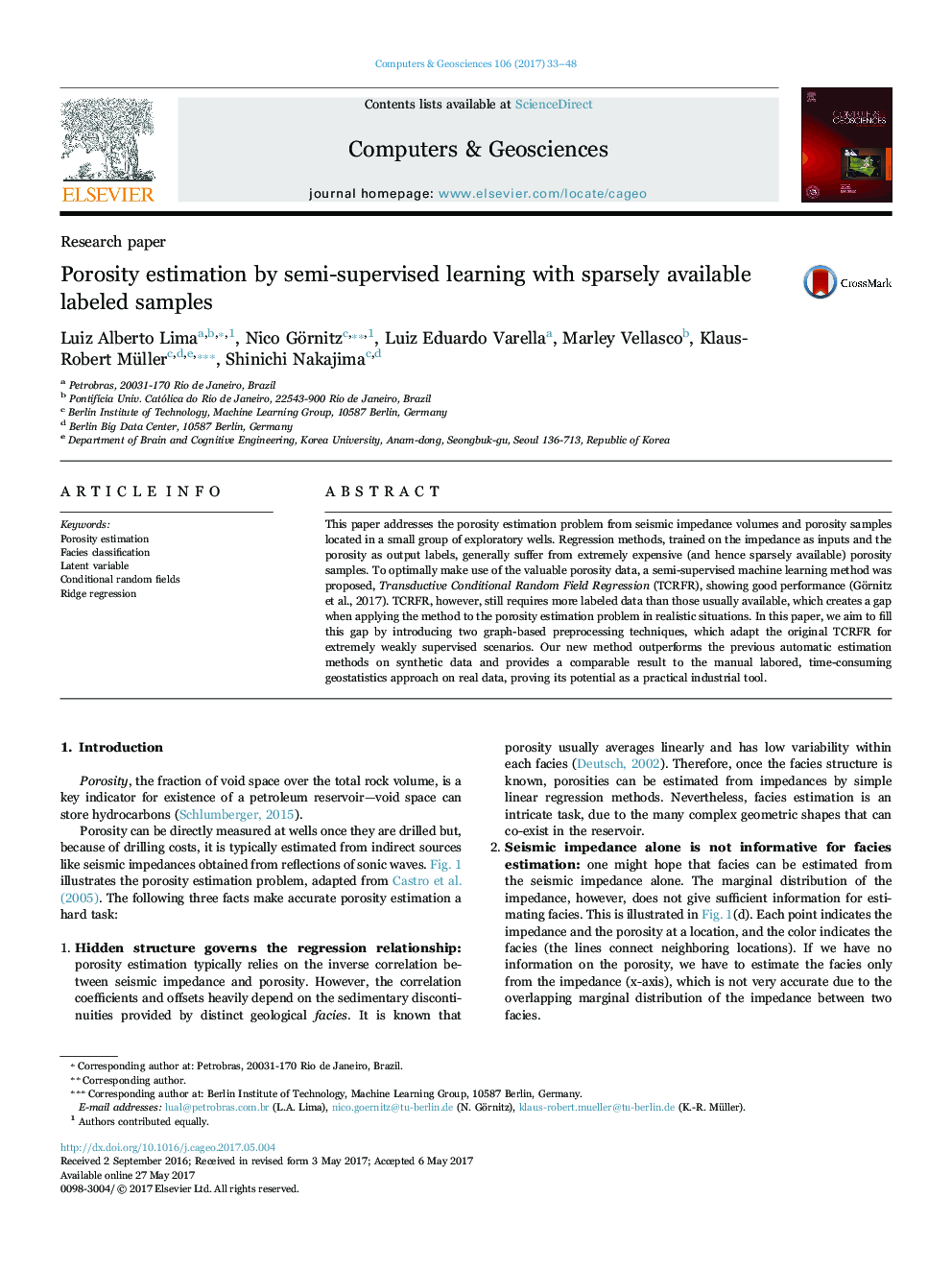| Article ID | Journal | Published Year | Pages | File Type |
|---|---|---|---|---|
| 4965308 | Computers & Geosciences | 2017 | 16 Pages |
Abstract
This paper addresses the porosity estimation problem from seismic impedance volumes and porosity samples located in a small group of exploratory wells. Regression methods, trained on the impedance as inputs and the porosity as output labels, generally suffer from extremely expensive (and hence sparsely available) porosity samples. To optimally make use of the valuable porosity data, a semi-supervised machine learning method was proposed, Transductive Conditional Random Field Regression (TCRFR), showing good performance (Görnitz et al., 2017). TCRFR, however, still requires more labeled data than those usually available, which creates a gap when applying the method to the porosity estimation problem in realistic situations. In this paper, we aim to fill this gap by introducing two graph-based preprocessing techniques, which adapt the original TCRFR for extremely weakly supervised scenarios. Our new method outperforms the previous automatic estimation methods on synthetic data and provides a comparable result to the manual labored, time-consuming geostatistics approach on real data, proving its potential as a practical industrial tool.
Keywords
Related Topics
Physical Sciences and Engineering
Computer Science
Computer Science Applications
Authors
Luiz Alberto Lima, Nico Görnitz, Luiz Eduardo Varella, Marley Vellasco, Klaus-Robert Müller, Shinichi Nakajima,
